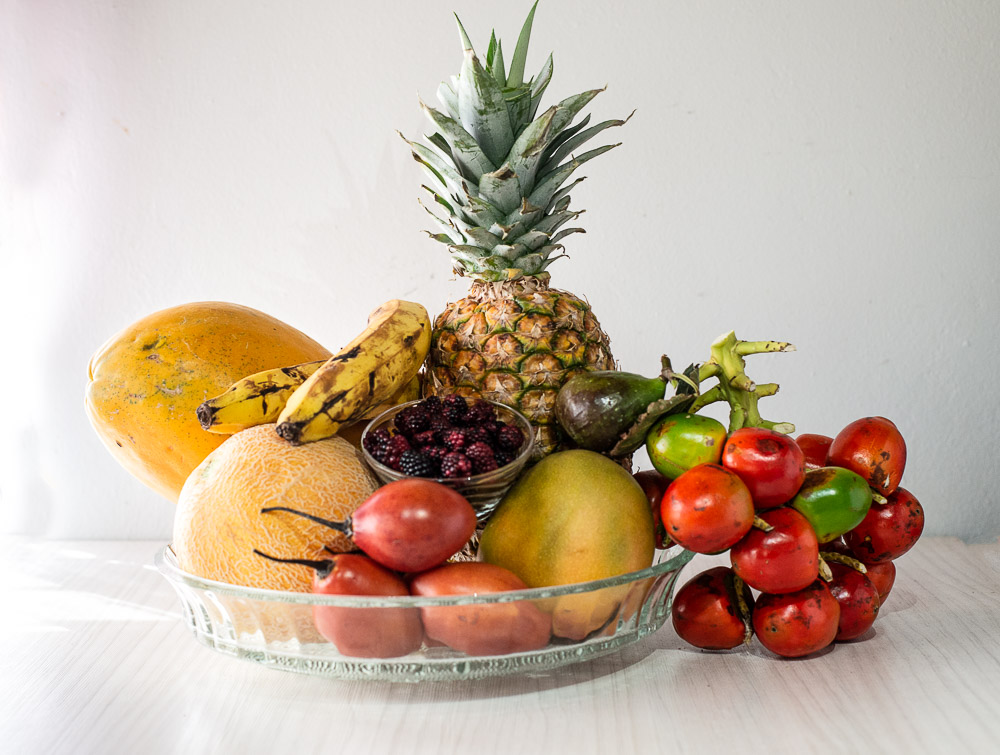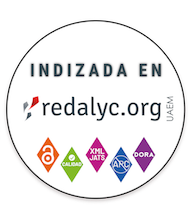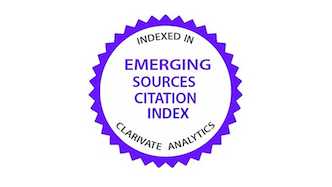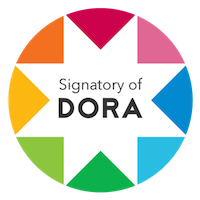Composición nutricional, contenido de compuestos bioactivos y capacidad antioxidante hidrofílica de frutas costarricenses seleccionadas
DOI:
https://doi.org/10.15517/am.v33i2.46175Palabras clave:
composición proximal, carotenoides, fibra dietética, polifenoles, antioxidantesResumen
Introducción. El consumo de frutas y vegetales correlaciona inversamente con la incidencia de enfermedades degenerativas como diabetes, enfermedades cardiovasculares, ciertos tipos de cáncer y cataratas asociadas al envejecimiento, dada la acción de compuestos bioactivos como vitamina C, polifenoles y carotenoides. Objetivo. Evaluar el perfil nutricional de once frutas cultivadas en Costa Rica. Materiales y métodos. Este estudio se realizó en el Centro Nacional de Ciencia y Tecnología de Alimentos de la Universidad de Costa Rica, en el 2010. Se determinó el contenido de fibra dietética, polifenoles totales, reportados como equivalentes de ácido gálico (EAG), carotenoides totales expresados como µg β-caroteno y la capacidad hidrofílica de absorción de radicales de oxígeno (H-ORACFL) de once frutas tradicionales o subutilizadas: banano (Musa AAA subgrupo Cavendish cv. ‘Grand Naine’), mora tropical de altura (Rubus adenotrichos cv. ‘vino con espinas rojas’), melón (Cucumis melo cv. ‘Veracruz’), higo (Ficus carica cv. ‘Brown-Turkey’), mango (Mangifera indica cv. ‘Tommy Atkins’), papaya (Carica papaya híbrido ‘Pococí’), pejibaye (Bactris gasipaes H.B.K), piña (Ananas comosus cv. híbrido MD-2 ‘Gold’), membrillo (Cydonia oblonga), jocote (Spondias purpurea cv. Tronador) y tomate de árbol rojo (Solanum betaceum). Las frutas fueron recolectadas en localidades de San José, Cartago, Alajuela, Guanacaste y Limón. Resultados. Seis de las frutas estudiadas presentaron contenidos de fibra dietética entre 4,2 y 6,6 g 100 g-1. La mora tropical de altura presentó el mayor contenido de compuestos fenólicos totales (538 ± 97 mg EAG 100 g-1) y la mayor actividad antioxidante (62,1 ± 4,0 μmol equivalentes de Trolox g-1), y el pejibaye cocido presentó el mayor contenido de carotenoides (72 ± 4 µg β-caroteno g-¹). Conclusión. Se evidencia los altos contenidos de compuestos bioactivos en frutas comúnmente cultivadas en Costa Rica, características nutricionales asociadas a beneficios para la salud, respaldados por estudios clínicos y epidemiológicos.
Descargas
Citas
Acosta-Montoya, Ó., Vaillant, F., Cozzano, S., Mertz, C., Pérez, A. M., & Castro, M. V. (2010). Phenolic content and antioxidant capacity of tropical highland blackberry (Rubus adenotrichus Schltdl.) during three edible maturity stages. Food Chemistry, 119(4), 1497–1501. https://doi.org/10.1016/j.foodchem.2009.09.032
Acosta-Quezada, P. G., Riofrío-Cuenca, T., Rojas, J., Vilanova, S., Plazas, M., & Prohens, J. (2016). Phenological growth stages of tree tomato (Solanum betaceum Cav.), an emerging fruit crop, according to the basic and extended BBCH scales. Scientia Horticulturae, 199, 216–223. https://doi.org/10.1016/j.scienta.2015.12.045
Afam, I. O. J., Henry, S.,Thakhani, T., Adewale, O. O., Henry, O. U., & Tonna, A. A. (2021). Antioxidant-rich natural fruit and vegetable products and human health. International Journal of Food Properties, 24(1), 41–67. https://doi.org/10.1080/10942912.2020.1866597
Almeida, M. M. B., de Sousa, P. H. M., Arriaga, Â. M. C., do Prado, G. M., Magalhães, C. E. de C., Maia, G. A., & de Lemos, T. L. G. (2011). Bioactive compounds and antioxidant activity of fresh exotic fruits from northeastern Brazil. Food Research International, 44(7), 2155–2159. https://doi.org/10.1016/j.foodres.2011.03.051
Anderson, J. W., Baird, P., Davis Richard H. J., Ferreri, S., Knudtson, M., Koraym, A., Waters, V., & Williams, C. L. (2009). Health benefits of dietary fiber. Nutrition Reviews, 67(4), 188–205. https://doi.org/10.1111/j.1753-4887.2009.00189.x
Association of Official Analytical Chemists. (1999). Official methods of analysis of AOAC International (16th ed.). Association of Official Analytical Chemists.
Blanco Metzler, A., Montero Campos, M., Fernández Piedra, M., & Mora-Uripí, J. (1992). Pejibaye palm fruit contribution to human nutrition. Principes, 36(2), 66–69.
Carvalho, G. B. M., Silva, D. P., Santos, J. C., Izário Filho, H. J., Vicente, A. A., Teixeira, J. A., Felipe, M. das G., & Almeida e Silva, J. B. (2009). Total soluble solids from banana: evaluation and optimization of extraction parameters. Applied Biochemistry and Biotechnology, 153(1-3), 34–43. https://doi.org/10.1007/s12010-008-8462-2
Carbonell-Capella, J. M., Buniowska, M., Barba, F. J., Esteve, M. J., & Frígola, A. (2014). Analytical methods for determining bioavailability and bioaccessibility of bioactive compounds from fruits and vegetables: A review. Comprehensive Reviews in Food Science and Food Safety, 13(2), 155–171. https://doi.org/10.1111/1541-4337.12049
Cilla, A., Bosch, L., Barberá, R., & Alegría, A. (2018). Effect of processing on the bioaccessibility of bioactive compounds – a review focusing on carotenoids, minerals, ascorbic acid, tocopherols and polyphenols. Journal of Food Composition and Analysis, 68, 3–15. https://doi.org/10.1016/j.jfca.2017.01.009
Clerici, M. T. P. S., & Carvalho-Silva, L. B. (2011). Nutritional bioactive compounds and technological aspects of minor fruits grown in Brazil. Food Research International, 44(7), 1658–1670. https://doi.org/10.1016/j.foodres.2011.04.020
Codex Alimentarius Commission. (2013). Guidelines for use of nutrition and health claims. Cac/Gl 23-1997. Food and Agriculture Organization. Retrieved September, 2020, from https://www.fao.org/ag/humannutrition/32444-09f5545b8abe9a0c3baf01a4502ac36e4.pdf
Corral-Aguayo, R. D., Yahia, E. M., Carrillo-Lopez, A., & González-Aguilar, G. (2008). Correlation between some nutritional components and the total antioxidant capacity measured with six different assays in eight horticultural crops. Journal of Agricultural and Food Chemistry, 56(22), 10498–10504. https://doi.org/10.1021/jf801983r
Dai, F. J., & Chau, C. F. (2017). Classification and regulatory perspectives of dietary fiber. Journal of Food and Drug Analysis, 25(1), 37–42. https://doi.org/10.1016/j.jfda.2016.09.006
de Souza, V. R., Pereira, P. A. P., da Silva, T. L. T., de Oliveira Lima, L. C., Pio, R., & Queiroz, F. (2014). Determination of the bioactive compounds, antioxidant activity and chemical composition of Brazilian blackberry, red raspberry, strawberry, blueberry and sweet cherry fruits. Food Chemistry, 156(1), 362–368. https://doi.org/10.1016/j.foodchem.2014.01.125
de Souza, V. R., Pereira, P. A. P., Queiroz, F., Borges, S. V., & de Deus Souza Carneiro, J. (2012). Determination of bioactive compounds, antioxidant activity and chemical composition of Cerrado Brazilian fruits. Food Chemistry, 134(1), 381–386. https://doi.org/10.1016/j.foodchem.2012.02.191
Delwiche, S. R., Mekwatanakarn, W., & Wang, C. Y. (2008). Soluble solids and simple sugars measurement in intact mango using near infrared spectroscopy. HortTechnology, 18(3), 410–416. https://doi.org/10.21273/HORTTECH.18.3.410
Elleuch, M., Bedigian, D., Roiseux, O., Besbes, S., Blecker, C., & Attia, H. (2011). Dietary fibre and fibre-rich by-products of food processing: characterisation, technological functionality and commercial applications: A review. Food Chemistry, 124(2), 411–421. https://doi.org/10.1016/j.foodchem.2010.06.077
Fernández-García, E., Carvajal-Lérida, I., Jarén-Galán, M., Garrido-Fernández, J., Pérez-Gálvez, A., & Hornero-Méndez, D. (2012). Carotenoids bioavailability from foods: from plant pigments to efficient biological activities. Food Research International, 46(2), 438–450. https://doi.org/10.1016/j.foodres.2011.06.007
Fernández-Piedra, M., Blanco-Metzler, A., & Mora-Urpí, J. (1995). Contenido de ácidos grasos en cuatro poblaciones de pejibaye, Bactris gasipaes (Palmae). Revista de Biología Tropical, 43(1-3), 61–66.
Food and Agriculture Organization. (2014). Banana market review and banana statistics 2012-2013. Retrieved September, 2020, from http://www.fao.org/3/i3627e/i3627e.pdf
Food and Drug Administration. (2013). Guidance for industry: Food labeling guide. Retrieved September, 2020, from https://www.fda.gov/regulatory-information/search-fda-guidance-documents/guidance-industry-food-labeling-guide
Freiman, Z. E., Rodov, V., Yablovitz, Z., Horev, B., & Flaishman, M. A. (2012). Preharvest application of 1-methylcyclopropene inhibits ripening and improves keeping quality of ‘Brown Turkey’ figs (Ficus carica L.). Scientia Horticulturae, 138, 266–272. https://doi.org/10.1016/j.scienta.2012.01.007
Ganesan, K., Jayachandran, M., & Xu, B. (2018). A critical review on hepatoprotective effects of bioactive food components. Critical Reviews in Food Science and Nutrition, 58(7), 1165–1229. https://doi.org/10.1080/10408398.2016.1244154
Georgé, S., Brat, P., Alter, P., & Amiot, M. J. (2005). Rapid determination of polyphenols and vitamin C in plant-derived products. Journal of Agricultural and Food Chemistry, 53(5), 1370–1373. https://doi.org/10.1021/jf048396b
Hamauzu, Y., Yasui, H., Inno, T., Kume, C., & Omanyuda, M. (2005). Phenolic profile, antioxidant property, and anti-influenza viral activity of chinese quince (Pseudocydonia sinensis Schneid.), quince (Cydonia oblonga Mill.), and apple (Malus domestica Mill.) fruits. Journal of Agricultural and Food Chemistry, 53(4), 928–934. https://doi.org/10.1021/jf0494635
Hassimotto, N. M. A., Da Mota, R. V., Cordenunsi, B. R., & Lajolo, F. M. (2008). Physico-chemical characterization and bioactive compounds of blackberry fruits (Rubus sp.) grown in Brazil. Ciência e Tecnologia de Alimentos, 28(3), 702–708. http://doi.org/10.1590/S0101-20612008000300029
Hernández, Y., Lobo, M. G., & González, M. (2006). Determination of vitamin C in tropical fruits: A comparative evaluation of methods. Food Chemistry, 96(4), 654–664. https://doi.org/10.1016/j.foodchem.2005.04.012
Hounhouigan, M. H., Linnemann, A. R., Soumanou, M. M., & Van Boekel, M. A. J. S. (2014). Effect of processing on the quality of pineapple juice. Food Reviews International, 30(2), 112–133. https://doi.org/10.1080/87559129.2014.883632
Huang, D., Ou, B., Hampsch-Woodill, M., Flanagan, J. A., & Prior, R. L. (2002). High-throughput assay of oxygen radical absorbance capacity (ORAC) using a multichannel liquid handling system coupled with a microplate fluorescence reader in 96-well format. Journal of Agricultural and Food Chemistry, 50(16), 4437–4444. https://doi.org/10.1021/jf0201529
Ikram, M. M. M., Ridwani, S., Putri, S. P., & Fukusaki, E. (2020). GC-MS based metabolite profiling to monitor ripening-specific metabolites in pineapple (Ananas comosus). Metabolites, 10(4), Article 134. https://doi.org/10.3390/metabo10040134
Jatunov, S., Quesada, S., & Díaz, C. (2010). Carotenoid composition and antioxidant activity of the raw and boiled fruit mesocarp of six varieties of Bactris gasipaes. Carotenoid composition and antioxidant activity of the raw and boiled fruit mesocarp of six varieties of Bactris gasipaes. Archivos Latinoamericanos de Nutrición, 60(1), 99–104.
Ji, W., Koutsidis, G., Luo, R., Hutchings, J., Akhtar, M., Megias, F., & Butterworth, M. (2013). A digital imaging method for measuring banana ripeness. Color Research and Application, 38, 364–374. https://doi.org/10.1002/col.21741
Kaur, C., & Kapoor, H. C. (2001). Antioxidants in fruits and vegetables - the millennium’s health. International Journal of Food Science and Technology, 36(7), 703–725. https://doi.org/10.1111/j.1365-2621.2001.00513.x
Khurana, S., Venkataraman, K., Hollingsworth, A., Piche, M., & Tai, T. C. (2013). Polyphenols: benefits to the cardiovascular system in health and in aging. Nutrients, 5(10), 3779–3827. https://doi.org/10.3390/nu5103779
Lara-Abia, S., Lobo-Rodrigo, G., Welti-Chanes, J., & Cano, M.P. (2021). Carotenoid and carotenoid ester profile and their deposition in plastids in fruits of new papaya (Carica papaya L.) varieties from the Canary Islands. Foods, 10(2), Article 434. https://doi.org/10.3390/foods10020434
Leterme, P., Buldgen, A., Estrada, F., & Londoño, A. M. (2006). Mineral content of tropical fruits and unconventional foods of the Andes and the rainforest of Colombia. Food Chemistry, 95(4), 644–652. https://doi.org/10.1016/j.foodchem.2005.02.003
Li, B. W., Andrews, K. W., & Pehrsson, P. R. (2002). Individual sugars, soluble, and insoluble dietary fiber contents of 70 high consumption foods. Journal of Food Composition and Analysis, 15(6), 715–723. https://doi.org/10.1006/jfca.2002.1096
Luna-Guzmán, I., & Barrett, D. M. (2000). Comparison of calcium chloride and calcium lactate effectiveness in maintaining shelf stability and quality of fresh-cut cantaloupes. Postharvest Biology and Technology, 19(1), 61–72. https://doi.org/10.1016/S0925-5214(00)00079-X
Mahattanatawee, K., Manthey, J. A., Luzio, G., Talcott, S. T., Goodner, K., & Baldwin, E. A. (2006). Total antioxidant activity and fiber content of select Florida-grown tropical fruits. Journal of Agricultural and Food Chemistry, 54(19), 7355–7363. https://doi.org/10.1021/jf060566s
Mallawaarachchi, M. A. L. N., Madhujith, T., Suriyagoda, L. D. B., & Pushpakumara, D. K. N. G. (2021). Antioxidant efficacy of selected underutilized fruit species grown in Sri Lanka. Tropical Agricultural Research, 32(1), 68–80. http://doi.org/10.4038/tar.v32i1.8443
Maldonado-Astudillo, Y. I., Alia-Tejacal, I., Núñez-Colín, C. A., Jiménez-Hernández, J., Pelayo-Zaldívar, C., López-Martínez, V., Andrade-Rodríguez, M., Bautista-Baños, S., & Manach, C., Scalbert, A., Morand, C., Rémésy, C., & Jiménez, L. (2014). Polyphenols: food sources and bioavailability. The American Journal of Clinical Nutrition, 79(5), 727–747. https://doi.org/10.1093/ajcn/79.5.727
Manach, C., Scalbert, A., Morand, C., Rémésy, C., & Jiménez, L. (2004). Polyphenols: food sources and bioavailability. The American Journal of Clinical Nutrition, 79(5), 727–747. https://doi.org/10.1093/ajcn/79.5.727
Mei, X., Mu, T. H., & Han, J. J. (2010). Composition and physicochemical properties of dietary fiber extracted from residues of 10 varieties of sweet potato by a sieving method. Journal of Agricultural and Food Chemistry, 58(12), 7305–7310. https://doi.org/10.1021/jf101021s
Mertz, C., Gancel, A. L., Gunata, Z., Alter, P., Dhuique-Mayer, C., Vaillant, F., Perez, A. M., Ruales, J., & Brat, P. (2009). Phenolic compounds, carotenoids and antioxidant activity of three tropical fruits. Journal of Food Composition and Analysis, 22(5), 381–387. https://doi.org/10.1016/j.jfca.2008.06.008
Moo-Huchin, V. M., Estrada-Mota, I., Estrada-León, R., Cuevas-Glory, L., Ortiz-Vázquez, E., Vargas, M. de L. V., Betancur-Ancona, D., & Sauri-Duch, E. (2014). Determination of some physicochemical characteristics, bioactive compounds and antioxidant activity of tropical fruits from Yucatan, Mexico. Food Chemistry, 152(1), 508–515. https://doi.org/10.1016/j.foodchem.2013.12.013
Moreno, J., Cozzano, S., Pérez, A. M., Arcia, P., & Curutchet, A. (2019). Coffee pulp waste as a functional ingredient: effect on salty cookies quality. Journal of Food and Nutrition Research, 7(9), 632–638. https://doi.org/10.12691/jfnr-7-9-2
Mudgil, D., & Barak, S. (2013). Composition, properties and health benefits of indigestible carbohydrate polymers as dietary fiber: A review. International Journal of Biological Macromolecules, 61, 1–6. https://doi.org/10.1016/j.ijbiomac.2013.06.044
Nimse, S. B., & Pal, D. (2015). Free radicals, natural antioxidants, and their reaction mechanisms. RSC Advances, 35, 27986–28006. https://doi.org/10.1039/C4RA13315C
Palafox-Carlos, H., Yahia, E., Islas-Osuna, M. A., Gutierrez-Martinez P., Robles-Sánchez, M., González-Aguilar, G. A. (2012). Effect of ripeness stage of mango fruit (Mangifera indica L., cv. Ataulfo) on physiological parameters and antioxidant activity. Scientia Horticulturae, 135, 7–13. https://doi.org/10.1016/j.scienta.2011.11.027
Ramsaroop, R. E. S., & Saulo, A. A. (2007). Comparative consumer and physicochemical analysis of del monte hawai`i gold and smooth cayenne pineapple cultivars. Journal of Food Quality, 30, 135–159. https://doi.org/10.1111/j.1745-4557.2007.00111.x
Ramulu, P., & Udayasekhara Rao, P. (2003). Total, insoluble and soluble dietary fiber contents of Indian fruits. Journal of Food Composition and Analysis, 16(6), 677–685. https://doi.org/10.1016/S0889-1575(03)00095-4
Rasheed, M., Hussain, I., Rafiq, S., Hayat, I., Qayyum, A., Ishaq, S., & Awan, M. S. (2018). Chemical composition and antioxidant activity of quince fruit pulp collected from different locations. International Journal of Food Properties, 21(1), 2320–2327. https://doi.org/10.1080/10942912.2018.1514631
Rocha Ribeiro, S. M., Queiroz, J. H., de Queiroz, M. E., Campos, F. M., & Pinheiro Sant’Ana, H. M. (2007). Antioxidant in mango (Mangifera indica L.) pulp. Plant Foods for Human Nutrition, 62, 13–17. https://doi.org/10.1007/s11130-006-0035-3
Rodriguez-Amaya, D. B. (1996). Assessment of the provitamin A contents of foods— The Brazilian experience. Journal of Food Composition and Analysis, 9(3), 196–230. https://doi.org/10.1006/jfca.1996.0028
Rodríguez-Roque, M. J., De Ancos, B., Sánchez-Vega, R., Sánchez-Moreno, C., Elez-Martínez, P., & Martín-Belloso, O. (2020). In vitro bioaccessibility of isoflavones from a soymilk-based beverage as affected by thermal and non-thermal processing. Innovative Food Science and Emerging Technologies, 66, Article 102504. https://doi.org/10.1016/j.ifset.2020.102504
Rojas-Garbanzo, C., Gleichenhagen, M., Heller, A., Esquivel, P., Schulze-Kaysers, N., & Schieber, A. (2017). Carotenoid profile, antioxidant capacity, and chromoplasts of pink guava (Psidium guajava L. cv. “Criolla”) during fruit ripening. Journal of Agricultural and Food Chemistry, 65(18), 3737–3747. https://doi.org/10.1021/acs.jafc.6b04560
Rojas-Garbanzo, C., Pérez, A. M., Bustos-Carmona, J., & Vaillant, F. (2011). Identification and quantification of carotenoids by HPLC-DAD during the process of peach palm (Bactris gasipaes H.B.K.) flour. Food Research International, 44(7), 2377–2384. https://doi.org/10.1016/j.foodres.2011.02.045
Rojas-Garbanzo, C., Pérez, A. M., Pineda Castro, M. L., & Vaillant, F. (2012). Major physicochemical and antioxidant changes during peach-palm (Bactris gasipaes H.B.K.) flour processing. Fruits, 67(6), 415–427. https://doi.org/10.1051/fruits/2012035
Sangsoy, K., Mongkolporn, O., Imsabai, W., & Luengwilai, K. (2017). Papaya carotenoids increased in Oxisols soils. Agriculture and Natural Resources, 51(4), 253–261. https://doi.org/10.1016/j.anres.2017.10.003
Schiedt, K., & Liaaen-Jensen, S. (1995). Isolation and analysis. In G. Britton, S. Liaaen-Jensen, & H. Pfander (Eds.), Basel: Carotenoids, Volume 1A: Isolation and Analysis (pp. 81-108). Birkhäuser Verlag.
Seeram, N. P., Aviram, M., Zhang, Y., Henning, S. M., Feng, L., Dreher, M., & Heber, D. (2008). Comparison of antioxidant potency of commonly consumed polyphenol-rich beverages in the United States. Journal of Agricultural and Food Chemistry, 56(4), 1415–1422. https://doi.org/10.1021/jf073035s
Soto, M., Pérez, A. M., Cerdas, M. M., Vaillant, F., & Acosta, O. (2019). Physicochemical characteristics and polyphenolic compounds of cultivated blackberries in Costa Rica. Journal of Berry Research, 9(2), 283–296. https://doi.org/10.3233/JBR-180353
Soto, M., Brenes, M., Jiménez, N., Cortés, C., Umaña, G., & Pérez, A.M. (2021). Selection of optimal ripening stage of papaya fruit (Carica papaya L.) and vacuum frying conditions for chips making. CyTA - Journal of Food, 19(1), 273–286. https://doi.org/10.1080/19476337.2021.1893823
Swallah, M.S., Sun, H., Affoh, R., Fu, H., & Yu, H. (2020). Antioxidant potential overviews of secondary metabolites (polyphenols) in fruits. International Journal of Food Science, 2020, Article 9081686. https://doi.org/10.1155/2020/9081686
Torres, A. (2012). Physical, chemical and bioactive compounds of tree tomato (Cyphomandra betacea). Archivos Latinoamericanos de Nutrición, 62(4), 381–388.
Vaillant, F. (2020). Chapter 25 – Blackberries. In A. K. Jaiswal (Ed.), Nutritional composition and antioxidant properties of fruits and vegetables (pp. 407–422). Academic Press. https://doi.org/10.1016/B978-0-12-812780-3.00025-8
Wang, S. Y., & Lin, H. S. (2000). Antioxidant activity in fruits and leaves of blackberry, raspberry, and strawberry varies with cultivar and developmental stage. Journal of Agricultural and Food Chemistry, 48(2), 140–146. https://doi.org/10.1021/jf9908345
World Health Organization. (2020). Promoting fruit and vegetable consumption. Retrieved September, 2020, from https://www.euro.who.int/en/health-topics/disease-prevention/nutrition/activities/technical-support-to-member-states/promoting-fruit-and-vegetable-consumption
Yahia, E. M., Ramirez-Padilla, G., & Carrillo-Lopez, A. (2009). Carotenoid content of five fruits and vegetables and their bioconversion to vitamin A measured by retinol accumulation in rat livers. ISHS Acta Horticulture, 841, 619–624. https://doi.org/10.17660/ActaHortic.2009.841.97
Yánez Bustamante, W. D., Quevedo Guerrero, J. N., García Batista, R. M., Herrera Reyes, S. N., & Luna Romero, Á.E. (2020). Determinación de la relación carga química grados brix en hojas y frutos de banano clon williams (Musa x paradisiaca). Universidad y Sociedad, 12(5), 421–430.
Yuyama, L. K., Aguiar, J. P., Yuyama, K., Clement, C., Macedo, S. H., Fávaro, D. I., Afonso, C., Vasconcellos, M. B., Pimentel, S. A., Badolato E. S. G., & Vannucchi, H. (2003). Chemical composition of the fruit mesocarp of three peach palm (Bactris gasipaes) populations grown in Central Amazonia, Brazil. International Journal of Food Science and Nutrition, 54(1), 49–56. https://doi.org/10.1080/096374803/000061994

Archivos adicionales
Publicado
Cómo citar
Número
Sección
Licencia
1. Política propuesta para revistas de acceso abierto
Los autores/as que publiquen en esta revista aceptan las siguientes condiciones:
- Los autores/as conservan los derechos morales de autor y ceden a la revista el derecho de la primera publicación, con el trabajo registrado con la licencia de atribución, no comercial y sin obra derivada de Creative Commons, que permite a terceros utilizar lo publicado siempre que mencionen la autoría del trabajo y a la primera publicación en esta revista, no se puede hacer uso de la obra con propósitos comerciales y no se puede utilizar las publicaciones para remezclar, transformar o crear otra obra.
- Los autores/as pueden realizar otros acuerdos contractuales independientes y adicionales para la distribución no exclusiva de la versión del artículo publicado en esta revista (p. ej., incluirlo en un repositorio institucional o publicarlo en un libro) siempre que indiquen claramente que el trabajo se publicó por primera vez en esta revista.
- Se permite y recomienda a los autores/as a publicar su trabajo en Internet (por ejemplo en páginas institucionales o personales) antes y durante el proceso de revisión y publicación, ya que puede conducir a intercambios productivos y a una mayor y más rápida difusión del trabajo publicado (vea The Effect of Open Access).























